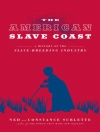For centuries, travelers have made Central Asia known to the wider world through their writings. In this volume, scholars employ these little-known texts in a wide range of Asian and European languages to trace how Central Asia was gradually absorbed into global affairs. The representations of the region brought home to China and Japan, India and Persia, Russia and Great Britain, provide valuable evidence that helps map earlier periods of globalization and cultural interaction.
สารบัญ
Introduction: Travel, Writing and the Global History of Central Asia Nile Green
Part I. Identity, Information and Trade, c.1500-1850
1. Early Modern Circulation and the Question of ‘Patriotism’ between Central Asia and India Sanjay Subrahmanyam
2. Prescribing the Boundaries of Knowledge: Seventeenth Century Russian Diplomatic Missions to Central Asia Ron Sela
3. Central Asians in the Eighteenth Century Qing Illustrations of Tributary Peoples Laura Hostetler
4. The Steppe Roads of Central Asia and the Persian Captivity Narrative of Mirza Mahmud Taqi Abbas Amanat and Arash Khazeni
Part II. Empire, Archaeology and the Arts, c.1850-1940
5. ‘The Rubicon between the Empires’: The River Oxus in the Nineteenth Century British Geographical Imaginary Kate Teltscher
6. Buddhist Relics from the Western Regions: Japanese Archaeological Exploration of Central Asia Imre Galambos
7.: A Russian Futurist in Asia: Velimir Khlebnikov’s Travelogue in Verse Ronald Vroon
8. Narrating the Ichkari Soundscape: European and American Travelers on Central Asian Women’s Lives and Music Tanya Merchant
เกี่ยวกับผู้แต่ง
Nile Green is Professor of South Asian and Islamic history at UCLA. His recent books include Bombay Islam: The Religious Economy of the West Indian Ocean, winner of the Albert Hourani Award for outstanding publishing in Middle East Studies and Sufism: A Global History.












